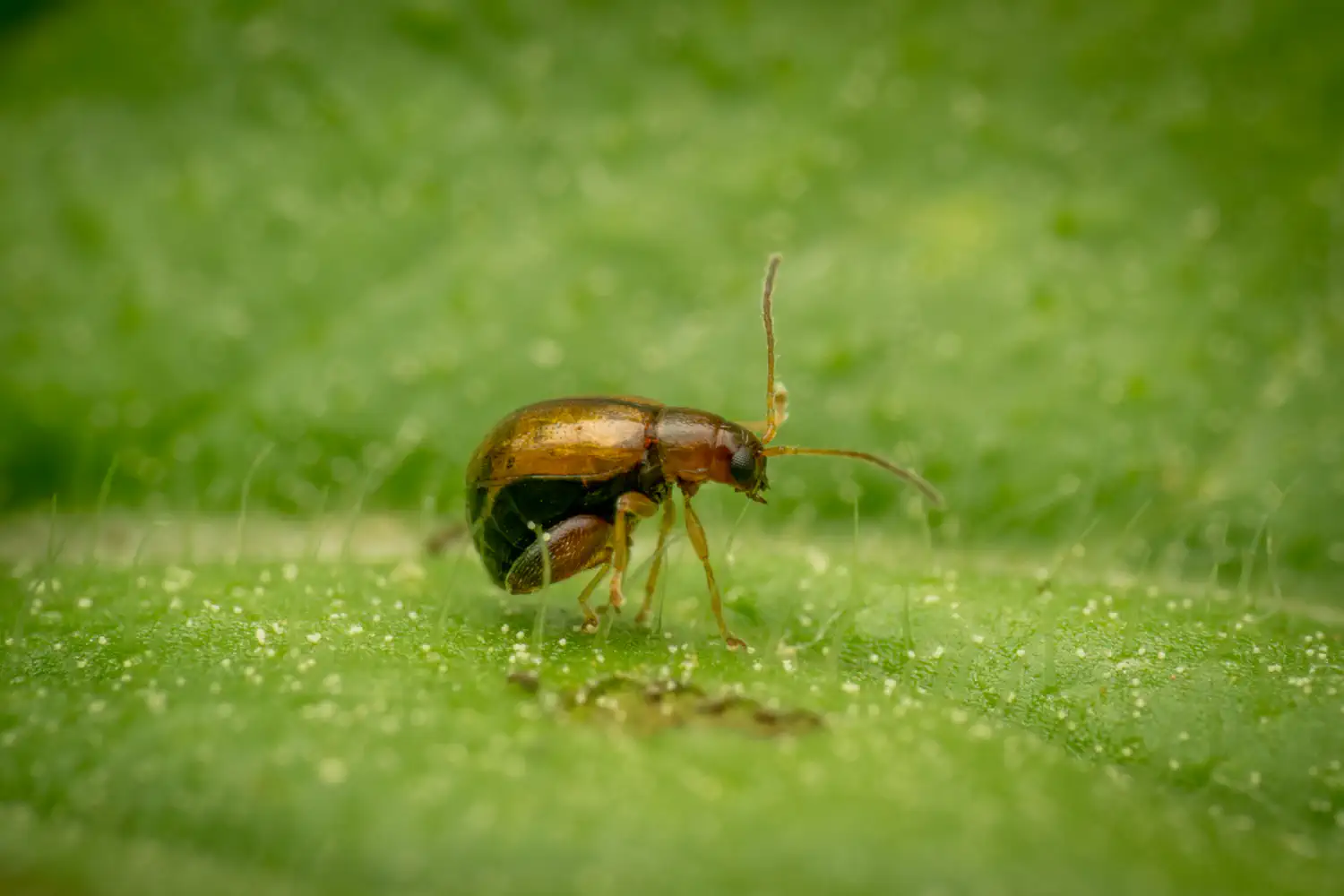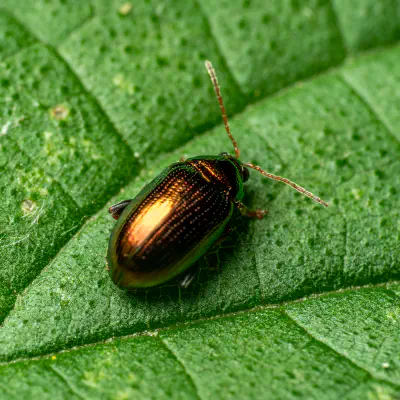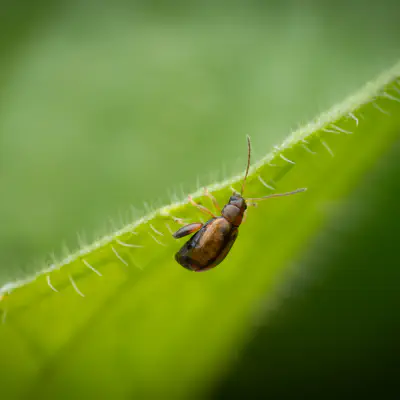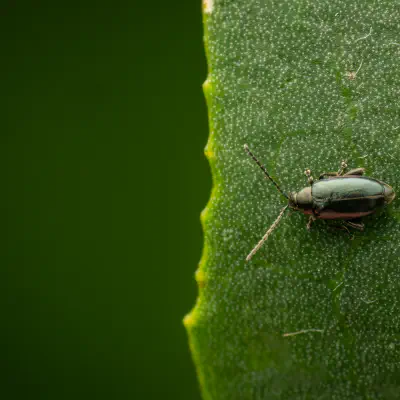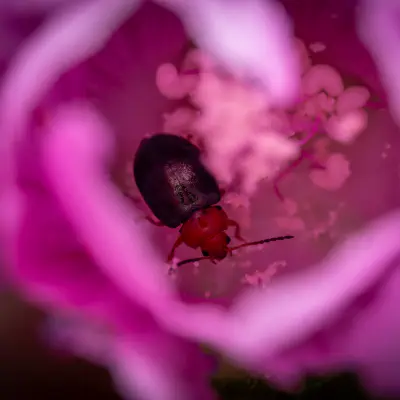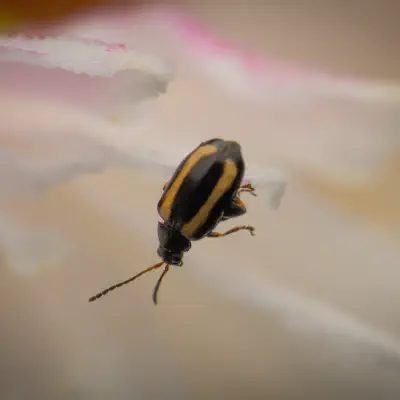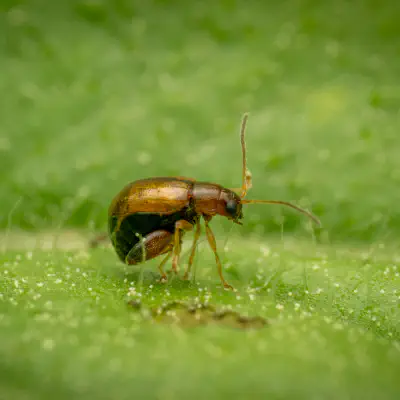Flea Beetles Lat. “Alticini“
The flea beetle is a small, jumping beetle of the leaf beetle family (Chrysomelidae), that makes up the tribe Alticini which is a part of the subfamily Galerucinae. Historically the flea beetles were classified as their own subfamily.
Hierarchy
Description and ecology
The adults are very small to moderately sized Chrysomelidae (i.e. among beetles in general they are on the smallish side). They are similar to other leaf beetles, but characteristically have the hindleg femora greatly enlarged. These enlarged femora allow for the springing action of these insects when disturbed. The jumping mechanism of flea beetles has been studied extensively. One study looked at several species of flea beetles, including the Altica cirsicola species, and described the jumping mechanism of these beetles to be very efficient. This study even applied the knowledge gained from the flea beetles to create a preliminary design for a bionic leg that can jump. Flea beetles can also walk normally and fly. Many flea beetles are attractively colored; dark, shiny and often metallic colors predominate. Adult flea beetles feed externally on plants, eating the surface of the leaves, stems and petals. Under heavy feeding the small round holes caused by an individual flea beetle’s feeding may coalesce into larger areas of damage. Some flea beetle larvae (e.g. of Phyllotreta species) are root feeders. In adverse weather conditions (rain, for example) some flea beetles seek shelter in the soil. Some species, such as Phyllotreta cruciferae and P. striolata, prefer to leave their hideouts only during warm and dry weather. The German name Erdflöhe (literally “earth fleas”) refers to their jumping ability and this behavior of hiding in the soil.
Relationship with humans
Flea beetles may be beneficial or may be pests, depending on the species.
Selected genera
This genus list is not complete. It is also partially from ITIS and might include genera placed elsewhere in other sources.
See also
List of flea beetle genera
External links
Flea beetle description at Kansas State University The Handbook of Palearctic Flea Beetles - identification of Palearctic flea beetle genera, along with morphology, host plant information, and literature references “Flea Beetles” by W.S. Cranshaw, Colorado State University Extension entomologist and professor
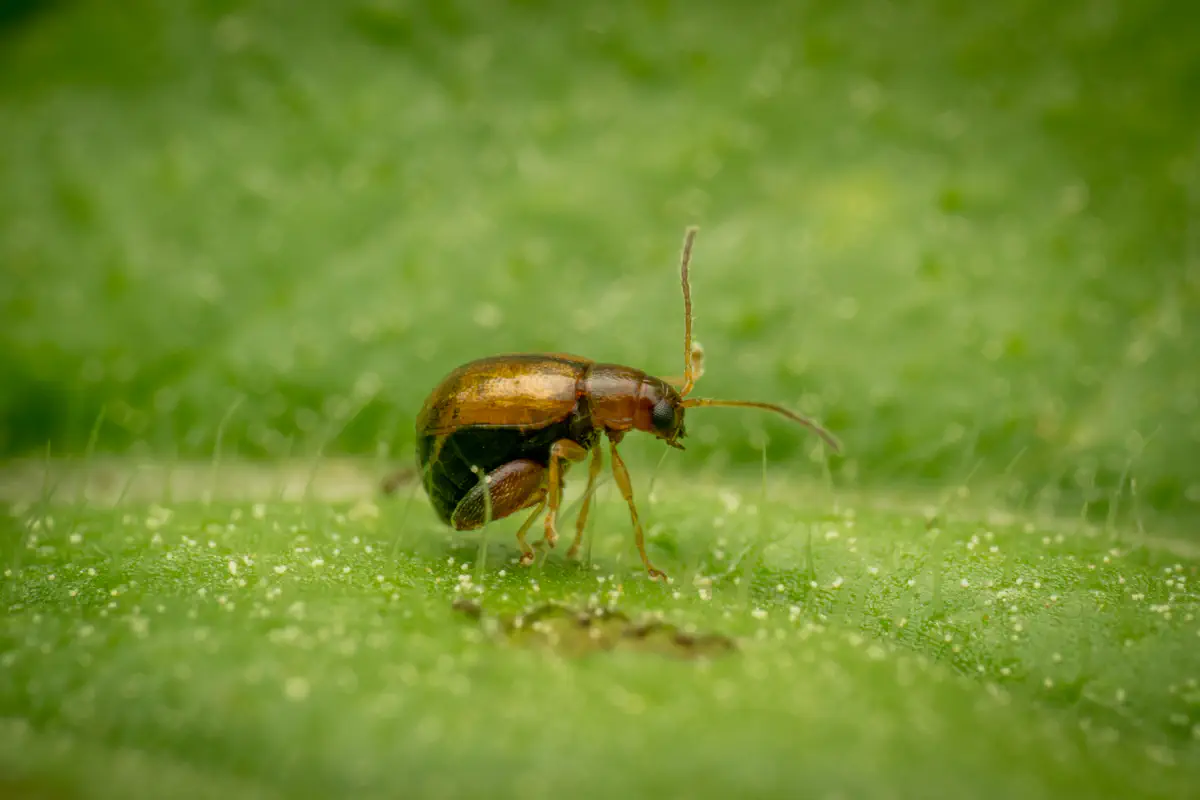
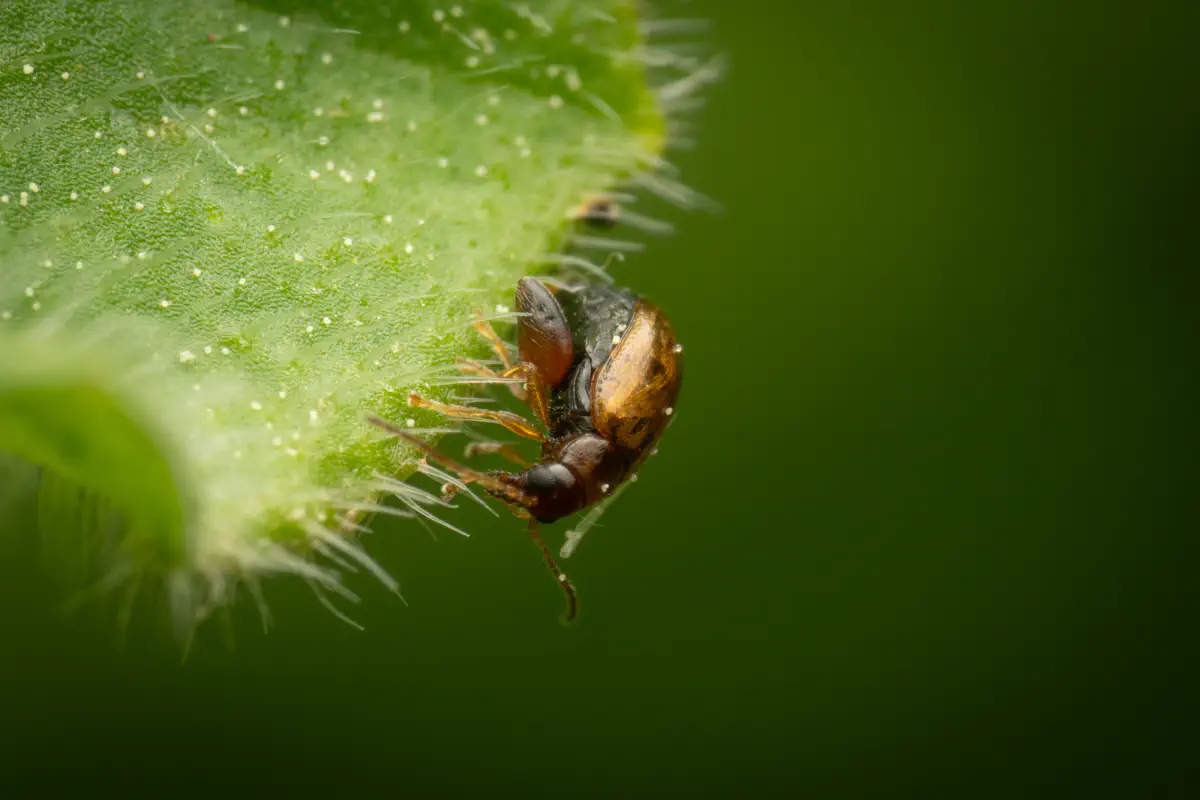

Ancestry Graph
Further Information
„Flea Beetles“ on wikipedia.org
„Flea Beetles“ on iNaturalist.org
Copyright

This article uses material from the Wikipedia article Alticini the free encyclopedia Wikipedia which is released under Creative Commons Attribution-ShareAlike 4.0 International License). On Wikipedia a list of authors is available.

Little beings in print
Order our calendars and books today!
Compiled with love. Printed sustainably. Experience our little beings even more vividly in print. All our publications are available for a small donation.

